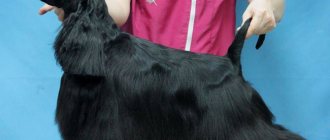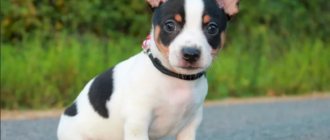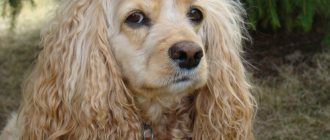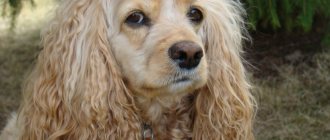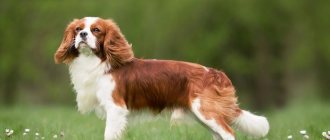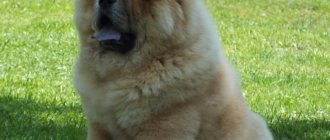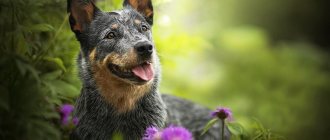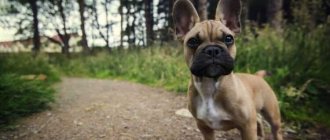Small dogs traditionally attract more attention than medium-sized and service breeds. There are many people in need of companions, and the adorable Shih Tzu fits the bill. The baby gets along comfortably in the apartment, loves to sit in arms, play and accompany the owner everywhere. Of course, a beautiful dog has features that the future owner needs to become familiar with in advance. Let's look at the main pros and cons of the breed and the requirements for caring for it.
Note! In Russian, the name of the breed can be written together or with a hyphen, and both options are correct.
Historical reference
Confirmed facts connect the origin of the breed with Tibet. In the monasteries of monks, these funny four-legged animals appeared in the 7th century. The first Shih Tzu dog appeared in China in the 17th century. Several miniature quadrupeds were presented by the Dalai Lama to the ruler of China. Immediately after receiving the gift, the breed was recognized as exclusively royal. If commoners dared to own a Shih Tzu, the actions were considered illegal and subject to the death penalty.
Note! Officially, the European origin of the breed (according to some sources, the first Shih Tzu were brought to Tibet from Byzantium) has not been confirmed.
The first Shih Tzu to leave China was presented to the Norwegian Ambassador. Using political connections, the official was able to take home not only the donated female, but also a couple of male dogs. Returning from a business trip, the ambassador independently began breeding an unknown breed of dogs.
This is interesting! After the world learned about the Shih Tzu, several hypotheses of their origin appeared. The first says that the little ones are descendants of the most ancient dogs on the planet. The second explains the appearance of the Shih Tzu by crossing Pekingese and Lhasa Apso (both breeds lived in Tibet).
Pedigree breeding of the breed and its development took place exclusively in China until 1912. The opening of Chinese borders for export allowed a small group of dogs to be exported to Europe, although this fact remained unnoticed until 1931 (the first Shih Tzus were registered in Great Britain). Official recognition and the first breed standard date back to 1934.
This is interesting! The Shih Tzu is called the lion dog or the chrysanthemum dog. The first nickname was received for the vertically growing hair on the face. Lion Dog is a name supported by the legend of Buddha. The deity was always accompanied by a small, cute dog (probably a Shih Tzu), which could turn into a lion. The legend is beautiful, but the direct translation of the term “Shih Tzu” sounds like “lion cub.”
Appearance
A luxuriously groomed dog with a funny face. The breed description specifies that Shih Tzus should not be fur-bearing and should not resemble Apso. To a beginner, these two breeds may seem similar, but they have different origins, and the differences in appearance are obvious.
The breed characteristics describe the Shih Tzu as a cheerful and friendly companion. Four-legged animals are always cheerful and active, and are arrogant and proud with strangers. When evaluating dogs at breed shows, the physique, breed traits, color and, last but not least, the size of the Shih Tzu are assessed.
The established standards are quite vague, which gives breeders an additional opportunity not to sacrifice the exterior for the sake of size:
- Height up to 27 cm.
- The weight of an adult dog ranges from 4.5–8.1 kg.
Note! Weight up to 7.5 kg is preferred (over 15 months of age).
Breed standard
- The head is voluminous, quite large, but not too heavy. In males and females, the size and roughness of head carriage differ; when comparing two dogs of different sexes, this feature should be taken into account. The forehead line is not too wide, with smooth, rounded edges. The cheekbones and chewing muscles are developed, but should not stand out in the silhouette of the muzzle (the muscles are flat). The transition from forehead to muzzle is pronounced and sharp. Pinned bangs should emphasize the transition, but not aggravate it. When viewed from the front, the top of the nose should be in line with the lower eyelids. The front part is rectangular, without folds.
- The teeth are small, densely and evenly set. The bite is straight or moderately overshot.
- The nose is of proportional size and has wide nostrils (narrowed nostrils are a disadvantage). The bridge of the nose is free from folds, and the dog's breathing is deep and even even in a stressful situation. Dogs have a brown or brown-spotted color and a dark brown (liver) nose. Shih Tzus are gray and blue in color; the nose can be deep gray, although such pigmentation is not recommended. For other colors, only a black nose is acceptable. Pink spots or clearly lightened pigmentation are a fault.
- The eyes are expressive, round in shape, not protruding. The color of the irises is dark brown, although light pigmentation is acceptable in brown, gray and blue dogs. The eyelids are tight-fitting, colored to match the nose.
- The ears are large, set below the top of the head, but above the eyes, decorated with abundant and long hair. The outdated standard allowed low set ears (at the level of the corners of the eyes).
- The body is elongated, that is, the height at the withers is less than the length of the back from the withers to the base of the tail. The neck is of medium length with an expressive arch. The withers are moderately pronounced, the back is straight (not sagging), the chest is proportionally wide, falling slightly below the elbows.
- The limbs are strong, moderately wide, rounded in cross-section. The shoulders are inclined towards the body, the forearms and pasterns are as vertical as possible. Hind legs with balanced angulations, thighs well rounded and muscular. The hands are well selected, abundantly covered, the fingers are compressed, the pads are convex and strong, the claws are arched.
- The tail is of natural length, carried over the back. Due to the set and abundant hair, the tip of the tail is in line with the crown, which gives the dog a more balanced appearance.
LIMBS
FORE LIMBS:
Shoulders: Strong, sloping back.
Forearms: Legs short and muscular with good bone, straight as possible, consistent with a broad, well let down chest .
Forelegs: Round, strong and heavily covered with hair.
HINDQUARTERS:
General appearance: Legs short and muscular with good bone. Straight when viewed from behind.
Hips: Round and muscular.
Hind feet: Round, strong and well padded. Abundantly covered with hair.
Tips for choosing a puppy
Recently, Shih Tzu puppies have become very popular. The market meets the requirements and more and more babies are appearing on sale, which is strange, because there are not many official nurseries. A similar situation occurs with Japanese Chins and other rare breeds. Businessmen make money from naive connoisseurs of small breeds by selling dogs of unknown origin under the guise of purebreds.
Decide in advance about your intentions: do you need a friend or a promising show dog? Paying an inflated price, choosing a puppy that is promising for breeding and not breeding it is not reasonable and disrespectful towards the breeder. When choosing a friend, you must make sure of the health of the parents, the physical strength of the puppy, and color and other exterior features are not so important.
Remember! For whatever purpose you decide to get a Shih Tzu, you need to take into account their affection and dependence on the person. A dog deprived of attention becomes very sad and may fall on its paws in pain or even die.
Be that as it may, we recommend choosing a Shih Tzu puppy from officially registered breeders. You may be able to purchase a pet-class puppy or one with minor defects, but you will be sure that:
- The Shih Tzu will correspond to the description and characteristics of the breed.
- You will not find unexpected ailments inherited by the puppy.
- You can contact the breeder for advice on the care, feeding, maintenance or treatment of your pet.
- The dog will be purchased under a contract, which makes it possible to assert your rights and contact kennel clubs in case of obvious deception.
- The parents of the puppies were selected based on physical health and mental stability.
Note! The parents' documents must be listed in a large kennel club. Fraudsters create private organizations and sell mongrel dogs with fake documents.
Similar breeds
Those uninitiated in the intricacies of the breed may confuse the Chinese “lion cub” with another famous “Tibetan” - the Lhasa Apso. There is a version that they are relatives. They are very similar in appearance, the main difference is in proportions and dimensions. The Chinese have shorter legs, a rounded head, a shorter nose, larger eyes and a lot of other differences upon closer inspection. When the Shih Tzu suffers from the fact that there are no owners at home, the Lhasa Apso calmly enjoys relaxing on the sofa.
Those who are completely inexperienced in breeds can mix the “chrysanthemum” with a Yorkshire terrier or even a Havanese bichon. But anyone who loves this dog will never confuse it with anyone else.
The Shih Tzu is an amazing creation of nature. There are not many creatures in this world who are so devoted to the people who tamed them. The Shih Tzu exudes so much charm and love for all living things that it is impossible not to reciprocate. If you are prepared to care for a long-haired pet, it will become not just a friend, but also a protector, lift your spirits at the right moment, and brighten up forced loneliness.
Character and training
The friendly nature of the Shih Tzu is strangely combined with pride and a certain arrogance. The four-legged dog clearly distinguishes the owner’s tone of voice and does not tolerate disrespectful treatment. Little ones rarely pretend to be leaders, but they insistently demand special treatment. For example, if a Shih Tzu wants to be held, you must drop everything and fulfill the will of the pet. Timely education allows you to develop the necessary habits and establish equality, but while the puppy is small, the lack of attention from the owner is critical.
Raising a Shih Tzu puppy involves establishing interpersonal contact, socialization and learning commands. The first two points come into play through daily communication and active walks, but training a Shih Tzu is a separate event. The breed is not a service breed and there are no special requirements for its training. For the sake of your own convenience and the dog’s safety, you need to include the following commands in your training:
- To me.
- Ugh.
- Near.
- Sit, lie down or stand as a stop command.
- Place - return to the sun lounger.
- Give me your paw and show your teeth to make grooming easier.
Important! Shih Tzus love to chase cats and are rarely aware of their own size in conflict situations. Try not to let your dog off the leash in an unfamiliar area, and if a conflict arises with a neighbor, take your ward in your arms.
In the first days of life in a new home, the puppy cannot be walked outside (until all vaccinations have been completed). Prepare a place for a diaper in advance, where the patient can relieve himself with impunity. By the way, Shih Tzu can be trained to use the toilet in the house. Having a tray has several advantages:
- The puppy doesn’t have to endure it and you don’t have to clean up the piles.
- Walking an adult dog will not depend on your schedule.
- Timely urination significantly reduces the risk of developing urolithiasis.
Owner reviews
When purchasing a Shih Tzu puppy, keep in mind that this is a very active dog. For some reason, we thought that our three-month-old pet would spend most of his time lying on the sofa or quietly playing with our daughter, who is only three years old. In fact, after each meal, the puppy began to actively run, play, and could even slowly bite our baby. It was very good that the breeder had already taught him the “No!” command. We immediately began raising the puppy, and my daughter played with him very carefully. In general, Shih Tzus respond well to training and education. They quickly get used to the place designated for the toilet and understand what the owner tells them. Our favorite is now over a year old and she is accustomed to playing only with her own toys, and can take her daughter’s toys only with her permission.
Ksenia, Russia
Our 13-year-old daughter always dreamed of a dog. But a pet needs to be walked and looked after, so we couldn’t afford to have a pet. One day, a friend advised me to buy a lap dog of the Shih Tzu breed, which could stay at home all day and at the same time be very smart and calm. We barely bought a puppy of this breed in our small town. And in fact it turned out that he is very unpretentious. I got used to my place and toilet very quickly. The pet is active, but at the same time does not require constant walks, it has good health and non-allergenic coat. That is, our daughter practically does not let the dog out of her hands, but she does not have any allergic reactions, although our child is allergic. The only disadvantage of the breed is the special care for the coat, which needs to be carefully combed constantly.
Svetlana, Russia
Shih Tzus do not require long walks.
For my birthday, my friends gave me a cute Shih Tzu dog. She turned out to be cheerful, kind and very affectionate. The big plus was that the breeder had already toilet trained the dog, and all I had to do was buy diapers. Thanks to his lively and cheerful character, all my relatives love the pet. He willingly plays tag with the kids, or throws a ball. But you must take your dog outside only on a leash or in a harness. She is so loving that she can easily go off with a stranger. If you have a small apartment, don’t hesitate to choose a Shih Tzu pet.
Anastasia, Russia
Maintenance and care
The Shih Tzu is a decorative breed that requires year-round maintenance in a home. Thick, long coat needs careful care and grooming. During shedding (lasts 2–3 weeks), the dog sheds its undercoat, which must be removed in a timely manner. The pet must be combed daily with a furminator or a long-toothed comb.
Routine grooming also includes brushing, as Shih Tzus are prone to matting. Many owners of non-show dogs make their lives easier by grooming their pet. A groomer specializing in the breed will offer you four cutting options:
- Exhibition or for show - the wool is kept or shortened a little, it is shaped, and split ends are removed.
- Model - the dog is given an original haircut, for example, with pigtails.
- Standard – shortening the coat to keep it clean and the dog’s neat appearance.
- Hygienic (combinable with any type of haircut) - shortening the hair between the fingers, on the face, in the ears and in the groin area.
Representatives of the breed are prone to fungal skin infections. Under natural conditions, the skin is protected by fat and gland secretions, but with frequent bathing, the “armor” is damaged. It turns out to be a vicious circle - the dog needs to be bathed often (after all, it gets dirty quickly), but this cannot be done. An alternative to skin problems is clothing:
- Winter overalls for frosty weather.
- Fleece suit for walking in spring and autumn.
- Raincoat for high air humidity.
- Anther for summer walks.
Important! To bathe your Shih Tzu, you must use a professional shampoo that is gentle on the skin and makes combing easier.
The elongated fur between the toes and raised pads need protection in winter. Pedestrian paths are (usually) salted and sanded. The mixture of “anti-slip coating” and snow gets stuck between the dog’s toes, which causes discomfort and sometimes pain. Salt hurts the skin, which causes burning, and during long walks, chemical burns. The way out of the situation is shoes, which the dog must be accustomed to from puppyhood. By the way, in hot weather, hot asphalt is also dangerous for your pet’s paws. Light boots will save you from schedule changes and your pet from burns.
In addition to breathing problems, the body type made the breed prone to ear infections. Large ears that lie close to the head allow the ears to retain heat and moisture, which is an excellent “help” for the growth of bacteria. Caring for your Shih Tzu's ears involves daily inspection and cleaning once every 5-10 days. If you notice dark plaque, cloudy discharge, or a strong odor from the ears, contact your veterinarian immediately. Advanced otitis media, ear mites and fungal infections are treated differently, and the true cause of the disease can only be determined by scraping.
The Shih Tzu naturally has a straight bite or underbite, and this obliges the owner to regularly brush the pet's teeth. The dog must be accustomed to the procedure from puppyhood, otherwise the four-legged dog may bite. Dogs over 3 years of age are at risk of developing tartar, which must be removed only in a veterinary clinic.
Important! The Shih Tzu needs its nails trimmed, especially in winter when walking time is reduced or the dog wears shoes for walks.
Your daily care routine includes an eye examination. The eyelids are examined for inflammation; the whites should not turn red (acceptable in hot weather). If you find matted fur around your eyes, you need to rule out conjunctivitis. If there is a food allergy, the breed tends to bleed profusely.
Feeding
Feeding your Shih Tzu correctly means choosing a balanced menu with optimal consistency. If a dog receives only dry food, the enamel of the teeth will quickly wear off and dental problems will begin. Only soft foods contribute to the formation of plaque and tartar. There are two optimal feeding options:
- industrial food in the form of a mixture of dry and wet food.
- Natural feeding - meat porridge and treats: vegetables, fruits, hygienic treats.
When choosing industrial feed, it is advisable to give preference to a manufacturer who clearly describes the composition of the product. A healthy dog can be kept on premium food with the addition of vitamin complexes. If there is the slightest problem with the skin, an allergic reaction or kidney failure, the dog should be switched to a super-premium or holistic class of food.
Important! For Shih Tzus, you need to choose wide and shallow bowls. The structure of the muzzle and the location of the nose are fraught with the entry of water and food into the nasal passages.
Natural feeding involves preparing porridge from quality products (meat, cereals, vegetables). During puppyhood and adolescence, the dog is fed cottage cheese or other dairy products daily. Several times a week you need to add a chicken egg to the porridge.
Important! Shih Tzus should not be given bones, even as toys. When a puppy is teething, he should receive special treats or play with a teether.
Nicknames for Shih Tzu
When choosing a nickname for a pet, you can take into account its noble origin (after all, the ancestors of the mini Shih Tzu lived in imperial palaces and delighted the eyes of the top officials of the Celestial Empire). Or you can focus on the baby’s cute appearance and positive character.
Therefore, names for Shih Tzu boys can be proud, for example, Archibald, Dominic, Caruso, Truffle, Churchill. Or infinitely cute: Bonnie, Georges, Leaf, Mickey, Sunny, Tim. If you want to name your pet in the Russian style, the names Venya, Raisin, Krosha, Kuzya, Styopa, Tema, Funtik, Yasha are suitable.
Names for Shih Tzu girls can also be stylish: Vanessa, Gabby, Bianca, Juliet, Jasmine, Lady, Matilda, Olivia - the names of both fairy-tale princesses and popular actresses are suitable for them. By the way, there will also be touching nicknames: Didi, Klepa, Lyalya, Mika, Simka, Fairy. And among the Russian “names” the nicknames Asya, Businka, Vanilka, Zhuzha, Munya, Sonya, Tykovka, Yusechka go well with the breed.
Health
The average life expectancy of a Shih Tzu is 16 years. Like all miniature breeds, four-legged dogs are prone to a fairly wide range of ailments, some of which are aggravated by their structure.
The shape of the skull and shortened muzzle increases the risk of eyeball prolapse . Essentially, this is an injury caused by weakness of the facial muscles and the open structure of the eye sockets. Owners who have seen a Shih Tzu's eyes fall out remember this event as if it were a horror movie. Remember, panic will not lead to anything good; the patient needs emergency care and an urgent visit to the veterinarian.
On your own you can:
- Calm the dog if you are outside, he will immediately go home.
- Moisten a sterile bandage with warm, clean water and cover the eye.
- If you have any eye ointment in the house, lubricate your eyelids and reapply gauze.
- You need to apply cold (ice, dry ice, frozen meat) on top of the gauze, after wrapping it in a dry, clean towel made of natural fabric.
- You can’t straighten your eyes yourself! Immediately after providing first aid, take your pet to a veterinary hospital!
Ophthalmological diseases characteristic of Shih Tzu: cataracts, glaucoma, abnormal eyelash growth (distichiasis), erosion and ulceration of the cornea of the eye, entropion of the eyelid.
A shortened muzzle and a slight snub nose also provoke breathing problems. If your Shih Tzu often grunts when lying down or snores while sleeping, this is considered normal. Reverse sneezing, difficulty breathing during activity, coughing and shortness of breath are causes for concern. Ignoring the problem can lead to tracheal collapse, which can lead to the death of your pet. In dogs with a tendency to collapse, the trachea is walled in advance (a metal mesh is placed in it, which maintains the trachea in its natural shape).
Long hair requires careful care, but despite the efforts of the owner, Shih Tzus are prone to fungal skin infections, eczema and the formation of tangles. The breed is also prone to atopic dermatitis – skin irritation for unknown reasons. In rare cases, the disease can be controlled by a strict diet.
Note! An elongated body shape, injury or severe stress can lead to problems with the spine. Shih Tzus are prone to hereditary transmission of slipped disc syndrome.
The range of hereditary diseases includes:
- Problems with the kidneys – underdevelopment of the organ or its rapid wear and tear.
- Urolithiasis due to poor quality feeding or drinking.
- Hereditary heart valve disease or cardiac septal defects.
- Age-related cardiomyopathy.
Most representatives of the breed require regular cleaning of the anal glands. When there is a blockage, the dog scratches the causative area on the carpets and floor, causing infection and inflammation. Regular infection leads to degeneration of gland cells, which can lead to adenoma.
